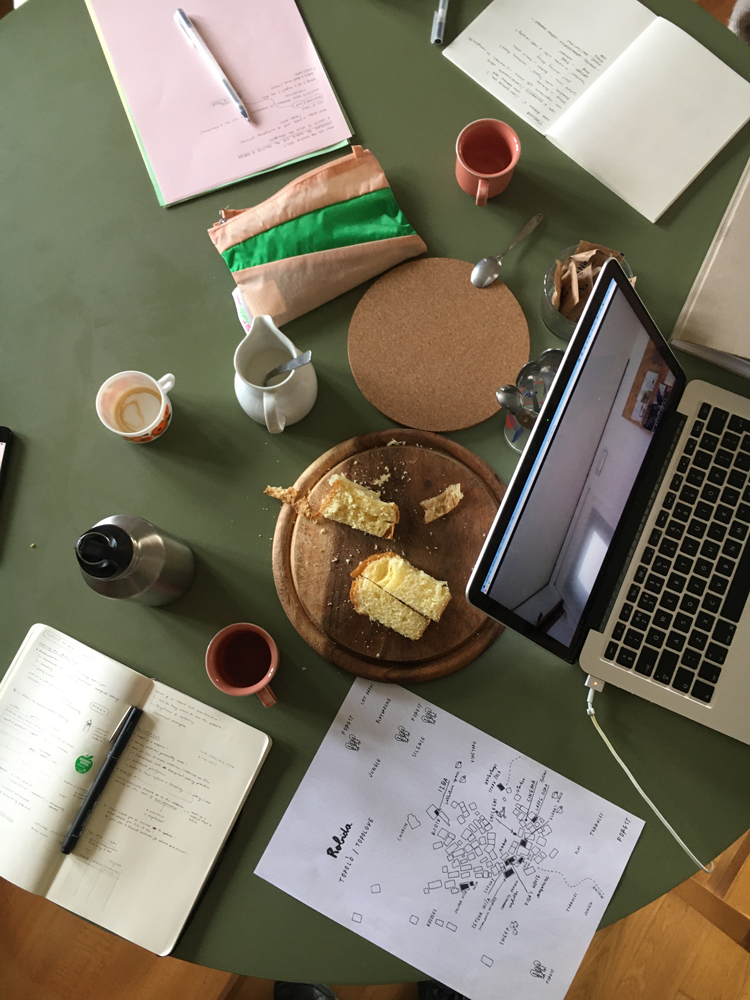Coding-In-Situ
13.06.2022
#coding#robida
#topolo
In April, earlier this year, Kirsten and I went on a trip to Topolo, a village on the Italian-Slovenian border. It's a remote and beautiful place, not only because of its geography but also because of its inhabitants. We were there to make a website for Robida, a collective exploring what contemporary practices in the margins of society might look like. We talked about how we would go about making the website during our stay and how we would be somewhat finished by the time we left, just over a week later.
We didn't know what we would find there. From the moment we stepped out of Vida's car, we realised how complicated it was going to be to create a website for such a place. The bird song was the first thing that hit me, then there was the sound of water, the smell of the forest, the sight of the architecture, the view across the valley...and this was only within the first few minutes of being there. In the time we spent in and around the village we discovered the practices of the collective, the relationships between people, places, history, nature, nation, and everything else.
It was overwhelming at first and warm for the rest.

As we began working on the website, I remember trying to think through how we might capture these feelings inside the coding we were doing. How could the sense of place be translated into a digital space? A few days before we left Jack had told me about a text by Jane Rendell in which she explains her concept of site writing. Site Writing is a way of writing architecture criticism in which you immerse yourself in the subject of your critique. Rendell explains that "when writing responds to physical, social, and political qualities of sites, is inserted back into sites, spaces are made out of encounters with readers, and like architecture, texts can inhabit and be inhabited".
What would site writing look like if it was applied to the writing of code? Writing code is different from writing critique. To write code for a website is to write a set of instructions that structure information into a renderable form in a web browser. So, how can a subject be engaged with through the writing of code?
Does the code itself become somehow more revealing of the subject? Does it become more relational? Are the effects of writing in this way only seen in the browser, or can they be traced back to HTML and CSS? Do you do the writing of code differently? Is it done with a computer or do you start elsewhere? Do you sit inside or lie down outside?

Somehow, this visit to Topolo and spending time with the members of Robida triggered all of these questions. Perhaps it was because they are involved in challenging conventional cultural practices through their projects as well as their everyday activities. This questioning seeped into our way of doing things and thinking through processes.
Of course, because of this, the website was far from done on the day we left. We had sat and coded for quite some hours, yet we hadn't made a website. We had hardly even started. Instead, we had looked at the practice of web development and, even with our amateur knowledge, asked how might we best continue. This question is constantly unfolding and has been stirring in my brain for the last few months. The website will be finished (sorry for the delay Vida, Aljaž and the rest of the Robida crew), but I hope to continue asking this question through the work I do for myself and others.
Back…